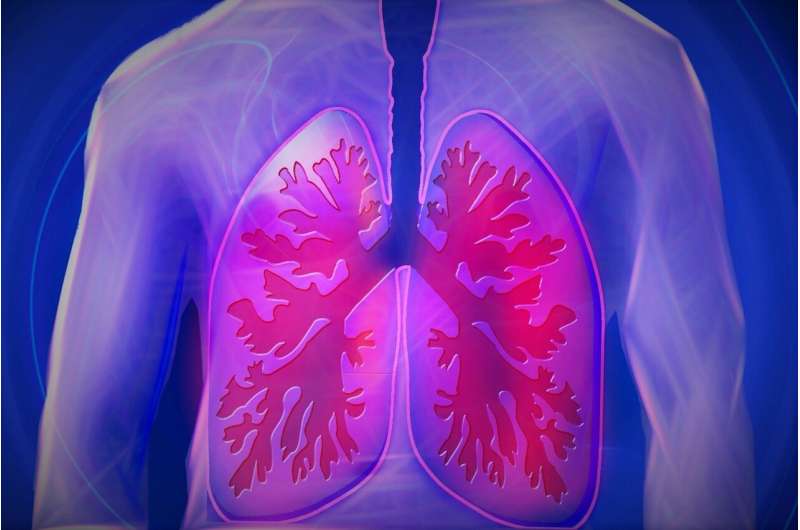This article has been reviewed according to Science X's editorial process and policies. Editors have highlighted the following attributes while ensuring the content's credibility:
fact-checked
peer-reviewed publication
trusted source
proofread
Pulmonary rehabilitation is difficult for millions of Americans to access, says new study

Pulmonary rehabilitation, an essential component of care for patients with chronic respiratory conditions, is difficult for millions of Americans to access, a new Yale-led study reveals. The findings, researchers say, reveal geographic regions where this type of care is most lacking and illustrate the potential for telemedicine in helping to bridge this gap.
The study was published Feb. 5 in JAMA Network Open.
Pulmonary rehabilitation is a multidisciplinary program that incorporates exercise and strategic techniques to improve quality of life and overall health for patients with respiratory conditions like chronic obstructive pulmonary disease (COPD), interstitial lung disease, or pulmonary hypertension.
Programs typically include a structured exercise component supervised by nurses and/or exercise specialists, as well as educational sessions that teach patients techniques that can help them better manage their illness day to day, such as energy conservation, supplemental oxygen therapy, and methods for capitalizing on periods of higher energy.
"It has been demonstrated across almost the entirety of pulmonary medicine to improve patient health and patient-reported outcomes," said Dr. Peter Kahn, a pulmonary and critical care fellow at Yale School of Medicine and lead author of the study. "Through these programs, patients not only gain a more comprehensive understanding of their condition, but also improve their exercise tolerance in a meaningful way."
However, despite the demonstrated importance of critical pulmonary rehabilitation, many people in the United States must travel long distances to utilize programs.
For the study, researchers used massive geographic data sets and computational infrastructure to compute hundreds of millions of travel times.
"Technologies enabling travel time computations at a massive scale are not just innovative but transformative, providing us with nuanced insights into national data sets previously unavailable to researchers," said senior author Dr. Walter Mathis, a psychiatrist and health services researcher at Yale School of Medicine.
While around 80% of Americans live within a 30-minute drive of a pulmonary rehabilitation program, the researchers found, over 14 million people—mostly living in the country's western and midwestern regions—must travel more than an hour away for access to their nearest offering.
The team also uncovered racial disparities in access to pulmonary rehabilitation. For example, nearly 30% of the American Indian and Alaska Native population lives more than an hour away from the closest program.
"Access to programs within a reasonable amount of travel time is key," said Kahn. "First, many patients with chronic respiratory conditions require oxygen supplementation. Long commutes may mean they have to transport multiple oxygen tanks or battery supplies, which may cause patients to forgo the treatment. Second, because exertional intolerance is a symptom of these diseases, long travel can be incredibly taxing and also serve as a barrier to participation."
Telemedicine and virtual rehabilitation can help bridge this gap need in the short term, said Kahn, though the long-term effectiveness of this approach across different diseases still needs additional evaluation.
Helping patients in the long term will require more accessible in-person rehabilitation options, he added. That will require collaboration between policymakers and health care providers and different approaches to insurance reimbursement.
"Insurance payers, both government and private, do not sufficiently reimburse pulmonary rehabilitation programs for the people, equipment, and supplies needed to effectively run them," said Kahn. That represents a barrier to offering these programs. Of equal importance, insurance limits how many rehabilitation sessions a patient can attend, he added.
"If you're someone with a chronic respiratory condition like advanced COPD, you really need ongoing therapeutic sessions," he added. "But right now, payers limit patients to a small number of lifetime sessions relative to the long-term burden of the disease. And that needs to change."
More information: Peter A. Kahn et al, Accessibility of Pulmonary Rehabilitation in the US, JAMA Network Open (2024). DOI: 10.1001/jamanetworkopen.2023.54867



















